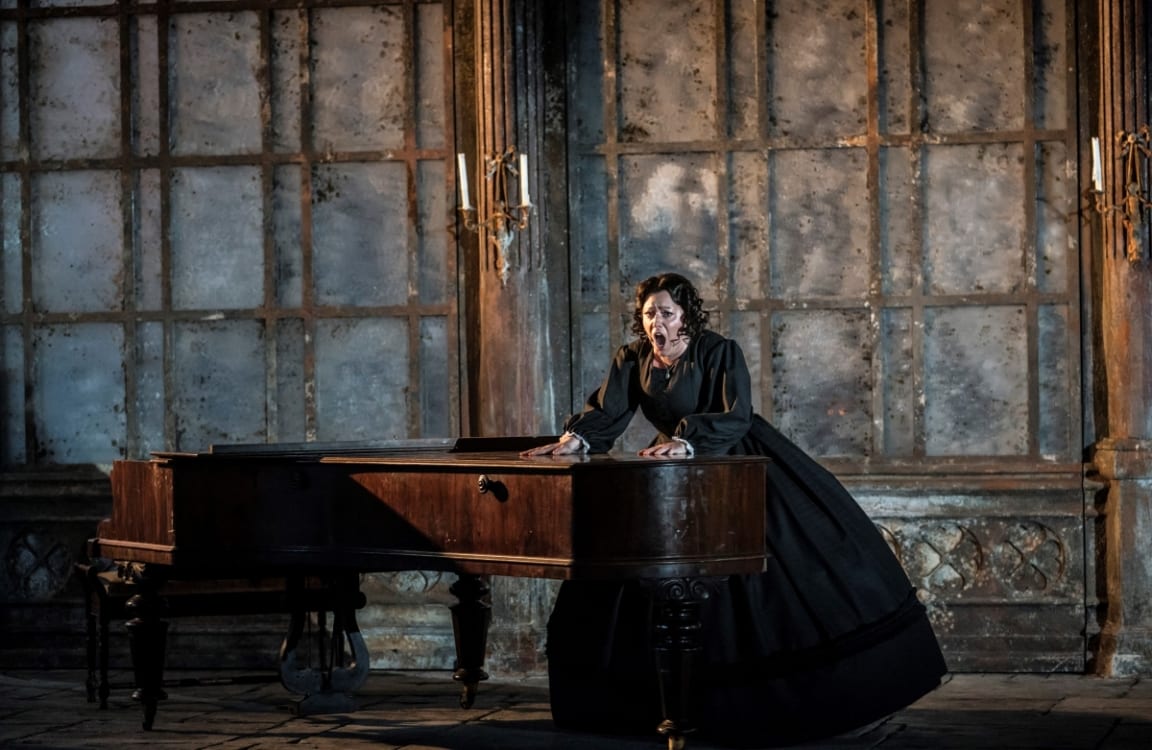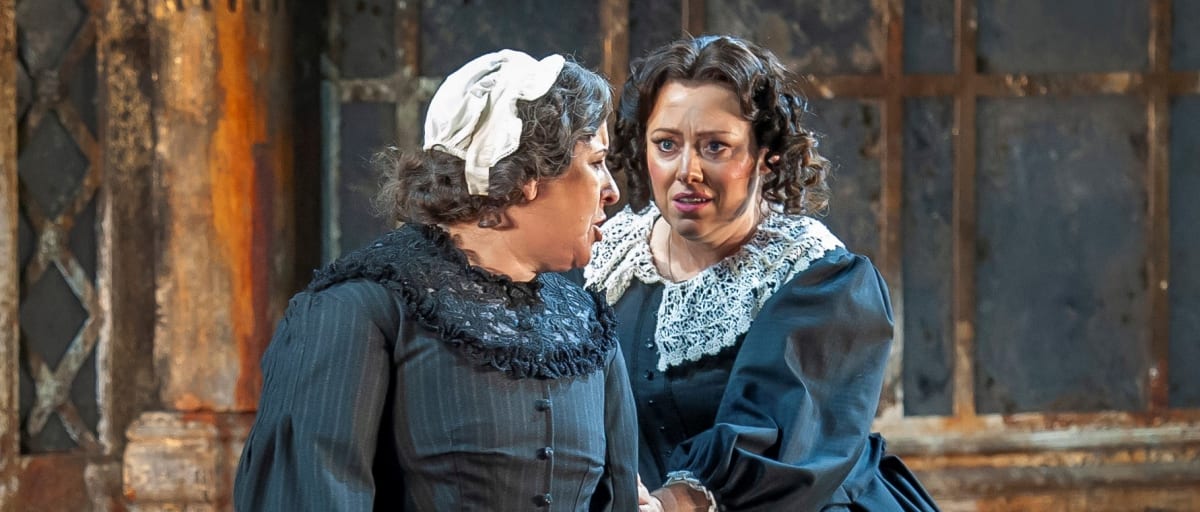“I am the hidden life that stirs when the candle is out” is the line of the libretto that remains in my memory after this superb production of The Turn of the Screw at Garsington. Henry James’ mysterious ghost story fascinated Benjamin Britten. When he began work with Myfanwy Piper, his chosen librettist, he quickly found a musical language that both captured the simple horror story of two innocent children trapped in a web of undefined adult corruption but also left all the ambiguities of the story intact. Are the ghosts real? Is the governess driven by hysteria? What do the children know? This persuasive version does justice to the full range of Britten’s masterpiece – the simple folk-like songs of the children, the panic-filled dialogue of the Governess and Housekeeper, the eerie monologues of the ghosts, and the relentless dramatic progress towards tragedy.
A governess is engaged by an unseen guardian in the city to look after two parentless young people who live in a house in the country. The governess is given strict instructions to get on with the job and not to bother the guardian. She arrives at the house to meet Flora and Miles, and is warmly welcomed by the housekeeper Mrs Grose. Gradually it becomes clear to the governess that the children are somehow under the influence of two previous servants no longer at the house. As she learns more about these two, Quint and Miss Jessel, her fears for the well-being of the children grow and the struggle between the governess and the ‘ghosts’ for control of the children reaches a horrifying climax.
The ringing pure tenor of Ed Lyon opens the opera as he sings the prologue, setting the scene for the arrival of the governess at Bly, the house where the two orphan children live. His portrayal of Quint is masterly, as he brings a chilling stillness and poise to the character that leaves us guessing about the nature of the evil he has brought to the house. Sophie Bevan gets under the skin of the role of the Governess as she moves from optimism to doubt and then to terror as the dark secrets of the house are partially revealed to her. Kathleen Wilkinson as the Housekeeper is a reassuring figure at first but, as the Governess’ fears multiply, the sense that she may have divided loyalties intensifies. And as the former governess Miss Jessel, Katherine Broderick matches Quint as she glides around the edges of the stage conjuring up some unnamed past horror – at one point crouching in the lake where her drowned body was found.

The singing of these four characters is of the highest standard – but they are matched in the performances of Leo Jemison and Adrianna Forbes-Dorant as Miles and Flora. Both deliver the musical goods with style and both manage to convey the unsettling combination of innocence and menace that suffuses Britten’s music. The Malo song has all the sadness and threat that it needs and the moment when Miles strokes the Governess’ cheek is chilling.
Director Louisa Muller keeps the story clear and uncluttered. Given that the ‘glass box’ auditorium at Garsington cannot be made dark until sunset – a drawback for this opera, in my view – the ghosts stay in plain sight for large parts of the later stages of the opera and, making a virtue of necessity, the director uses this to emphasise just how much their legacy dominates Bly House. The stage set is dominated by a series of huge glass panels which swivel and open with spooky impact and the creation of the lake on the stage is a smart scenic effect. The clarity of the story telling is admirable. Wielding the conductor’s baton Richard Farnes squeezes every ounce of musical tension from the excellent Garsington Opera Orchestra.
This is a version of the opera that does full justice to Britten’s marvellous score and, though it is more than 50 years old now, the hinted themes of depravity and exploitation feel as powerful as ever. This is well worth a trip to the beautiful Getty estate at Wormsley near Oxford.

